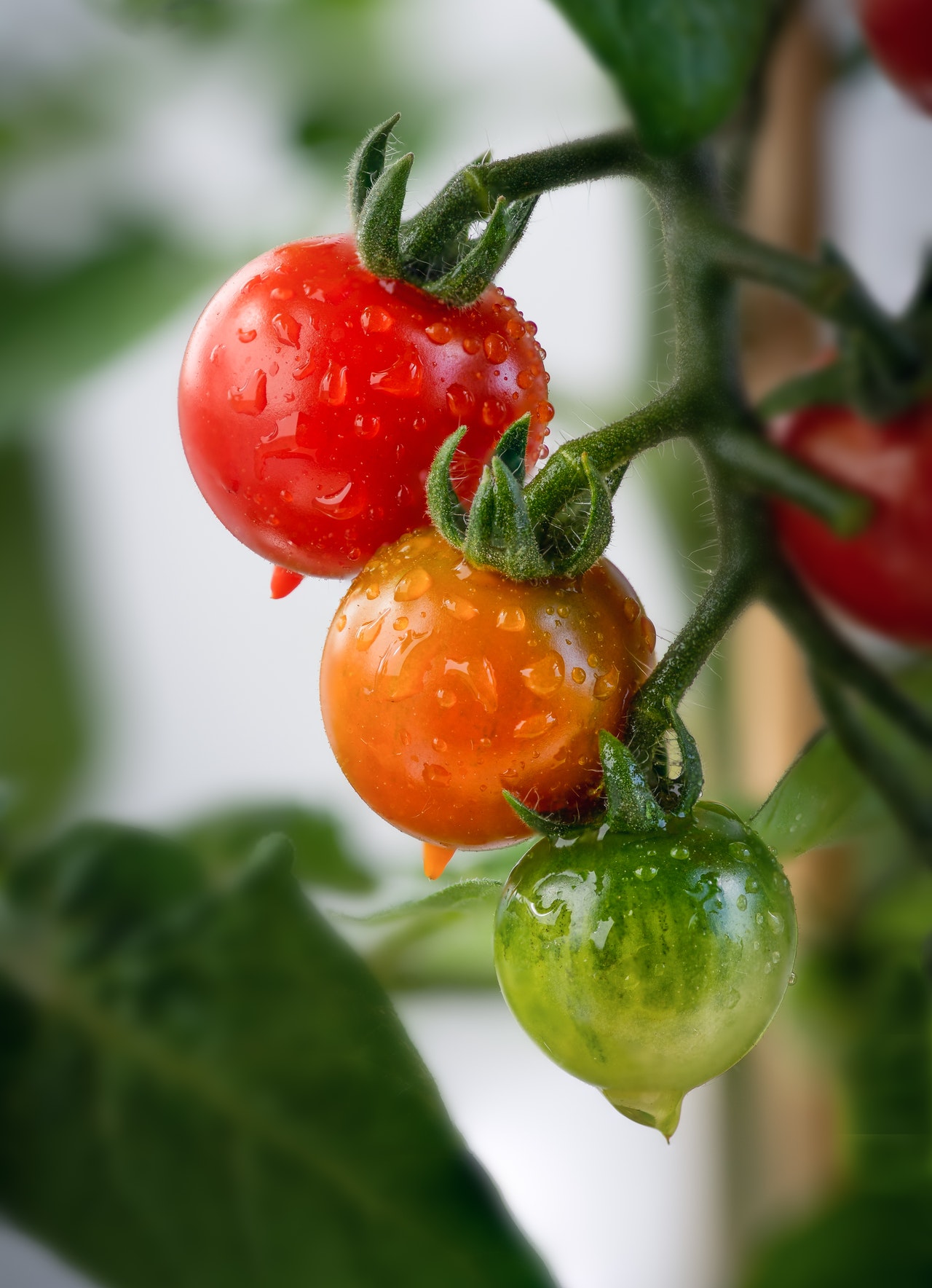Tomato Diseases: Late Blight (Phytophthora infestans), Early Blight (Alternaria solani), Gray Mold (Botrytis cinerea)
Late Blight of Tomato
Late blight, also known as phytophthora (Phytophthora infestans), is a fungus that attacks the leaves, stems, and fruits of the plant.
Symptoms:
- Irregularly shaped spots appear on the leaves, initially light brown and later darkening and becoming necrotic, while the leaf petioles remain green.
- A dirty white mildew may form on the underside of the leaves.
- Spots on the stems typically appear at the junction with the leaf petiole (due to water retention in this groove). The spots are elliptical and affect the cortex parenchyma.
- On the fruits, small, dark-colored, sunken spots appear, but the interior of the fruit is not affected.
The source of infection comes from infected potato plants. Tomato disease development is favored by wet weather (humidity above 90%) and temperatures between 18°C and 22°C. More vigorous varieties or inadequately pruned tomatoes are more easily attacked by the fungus due to moisture retention in the lush foliage. Protection should be carried out preventively. The forecasting system is based on daily monitoring of temperatures and precipitation (using thermometers, hygrometers, rain gauges, or climate stations that measure multiple parameters). Temperatures below 7°C are unfavorable for the development of late blight, and the intervals between treatments can be longer during dry periods if the average air temperature is above 25°C.
Tomatoes can be protected with preparations based on active substances: iprovalicarb (0.3%) (waiting period 14 days), cymoxanil + famoxadone (0.3%) (waiting period 14 days). During protection, as much spray as possible should be used, ensuring all plant organs are well covered.
Early Blight
Black spot – (Alternaria solani) is transmitted by seeds, where it can survive for up to 18 months, and also survives on infected plant debris, which must be destroyed. Under favorable conditions, conidia germinate on the seeds or plant debris, creating mycelium on which new conidia are formed. Conidia require a humid atmosphere and an optimal temperature range of 20 – 25°C for germination. Mycelium grows over a wide temperature range of 3 – 40°C, with the optimum being 26 – 28°C. This disease is difficult to control with fungicides; therefore, it is necessary to produce healthy seedlings by treating the seeds and sowing them in a sterile substrate. After germination, the seedlings should be sprayed weekly. Fungicides based on active substances: metiram.
Gray Mold
(Botrytis cinerea) is characteristic of protected cultivation. Tomatoes are more susceptible under conditions of high humidity, lower temperatures, poor lighting, increased nitrogen levels, and when conditions favorable for fungus development occur. It enters plant tissue through damaged areas (scars from fruit separation, removal of suckers, insect punctures). The fungus can also infect the fruit where it is attached to the peduncle, causing wet rot of the fruit, affecting a larger part or the entire fruit, and potentially more fruits that are in contact.
Controlling and regulating relative humidity in the air and soil in protected areas is a preventive measure to combat this disease. This fungus also attacks young seedlings in nurseries, so it is crucial to sow seeds in a sterile substrate and to sterilize the soil in protected areas before planting.
Chemical treatment to protect against this disease in tomatoes should begin at the first flowering.
Fungal Diseases
White rot (Sclerotinia sclerotiorum), stem canker (Didimela lycopersici), tomato root corky rot (Pyrenocheta lycopersici) – characteristic of protected areas without crop rotation, where tomatoes are grown for extended periods; root rot (Phytophthora nicotianae, P. capsici, P. cryptogea, P. citricola), leaf spot (Septoria lycopersici), powdery mildew (Leveillula taurica), wilting (Verticillium dahliae, V. albo-atrum, Fusarium oxysporum f. sp. lycopersici).
Bacterial Diseases
Bacterial speck (Pseudomonas syringae pv. tomato), tomato fruit cracking (Xanthomonas campestris pv. vesicatoria), bacterial wilt.
Viral Diseases
Tomato mosaic virus (Tomato mosaic virus), cucumber mosaic virus (Cucumber mosaic virus), tomato spotted wilt virus, tomato wilt virus.
When choosing fungicides for preventive protection of tomatoes in greenhouses, preference is given to the following active substances:
Fenhexamid (0.15%) (gray mold, white rot; waiting period = 4 days).
Boscalid + pyraclostrobin (0.1%) (black or early blight, gray mold, white rot; waiting period = 3 days)
Cymoxanil + famoxadone (0.04%) (late blight, black or early blight; waiting period = 7 days)
Azoxystrobin (0.075 – 0.1%) (late blight, black or early blight, powdery mildew; waiting period = 3 days)













































